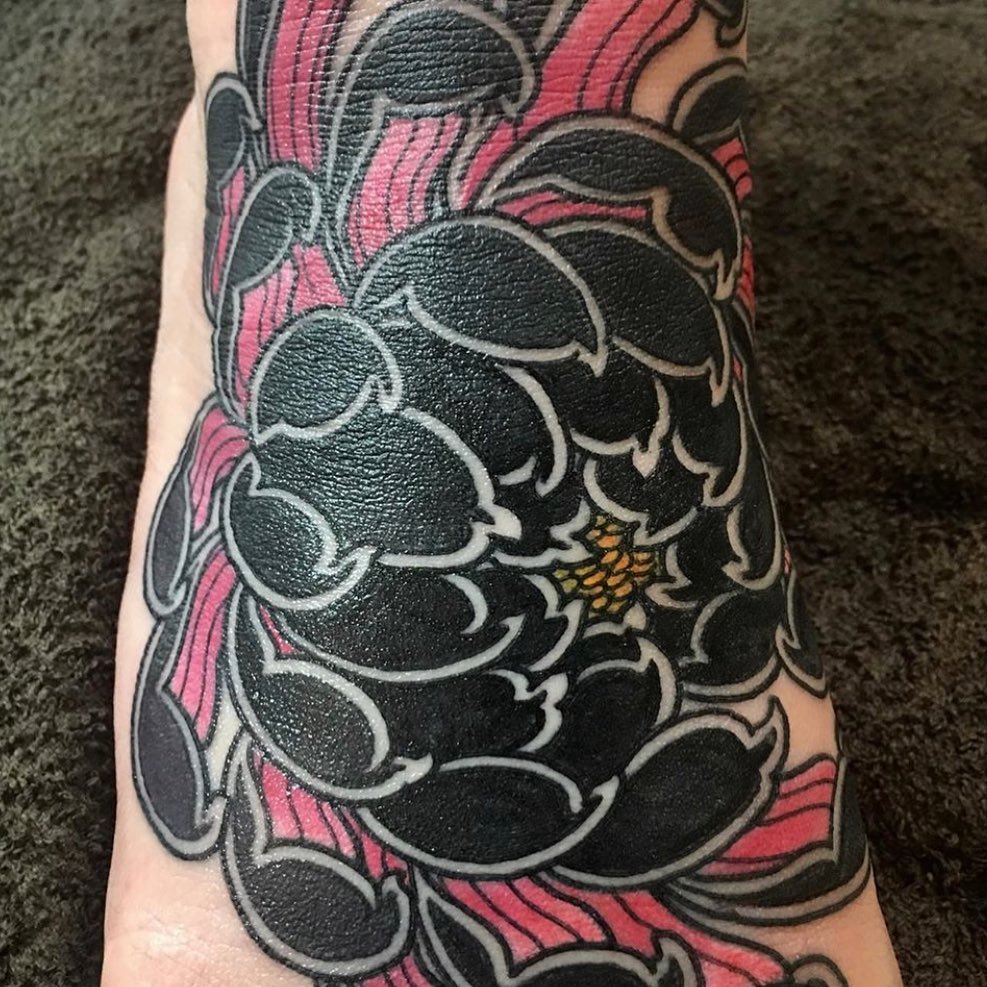1. Koi Fish
The koi fish is a powerful symbol in Japanese culture, representing perseverance, strength, and determination. In traditional Japanese tattoos, koi are often depicted swimming upstream, symbolizing the struggle to overcome obstacles and achieve success. Koi are also associated with good fortune and transformation, as they are believed to turn into dragons once they reach the top of a waterfall. The design typically features vibrant colors, such as gold, red, and blue, and is often combined with water elements to enhance the symbolism of endurance and fluidity in life.
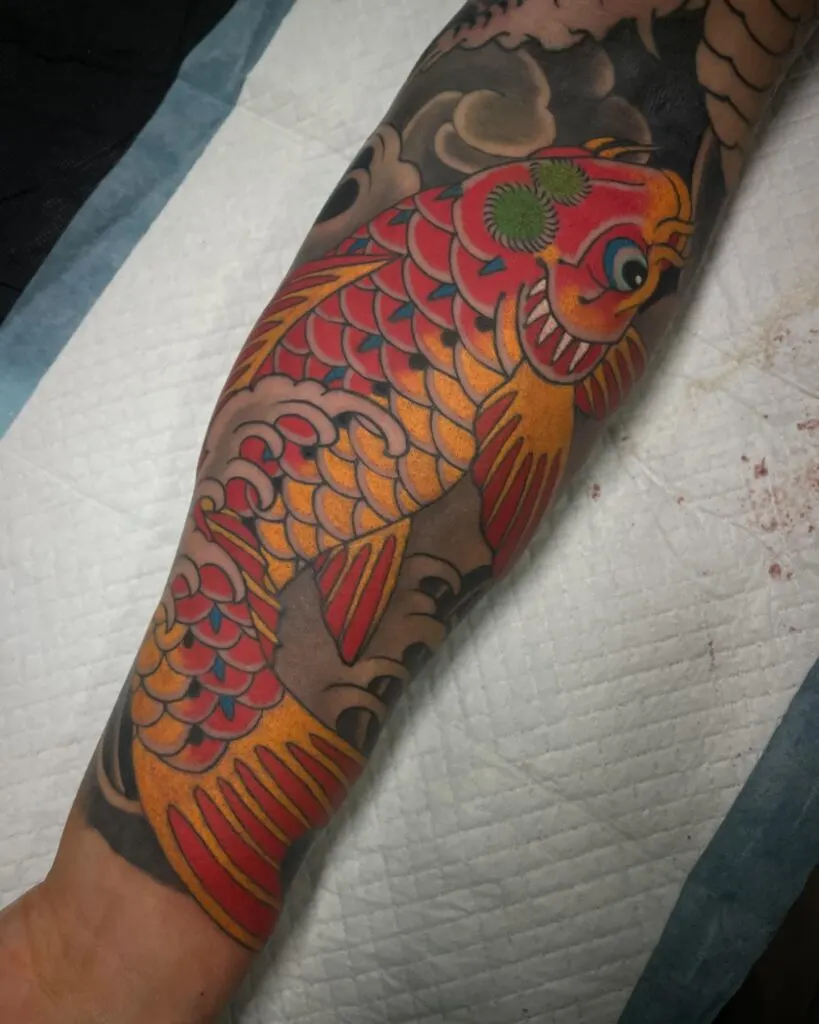
2. Dragon (Ryuu)
The dragon, or ryuu, is a prominent figure in Japanese mythology, symbolizing wisdom, power, and protection. Unlike Western dragons, Japanese dragons are benevolent creatures associated with water and rainfall, often seen as guardians of life. In traditional Japanese tattoos, dragons are depicted with a long, serpentine body, fierce expression, and intricate scales. The dragon tattoo is often worn as a talisman for strength and protection, embodying the wearer’s connection to powerful natural forces and their inner strength.

3. Phoenix (Hou-ou)
The phoenix, or hou-ou, is a mythical bird in Japanese culture that symbolizes rebirth, renewal, and immortality. The phoenix is believed to rise from its ashes after death, making it a powerful emblem of resilience and transformation. In traditional Japanese tattoos, the phoenix is often depicted with vibrant, fiery colors and intricate feather patterns, soaring through the sky or surrounded by flames. This design is chosen by those who have overcome significant challenges or who wish to signify a new beginning in their lives.
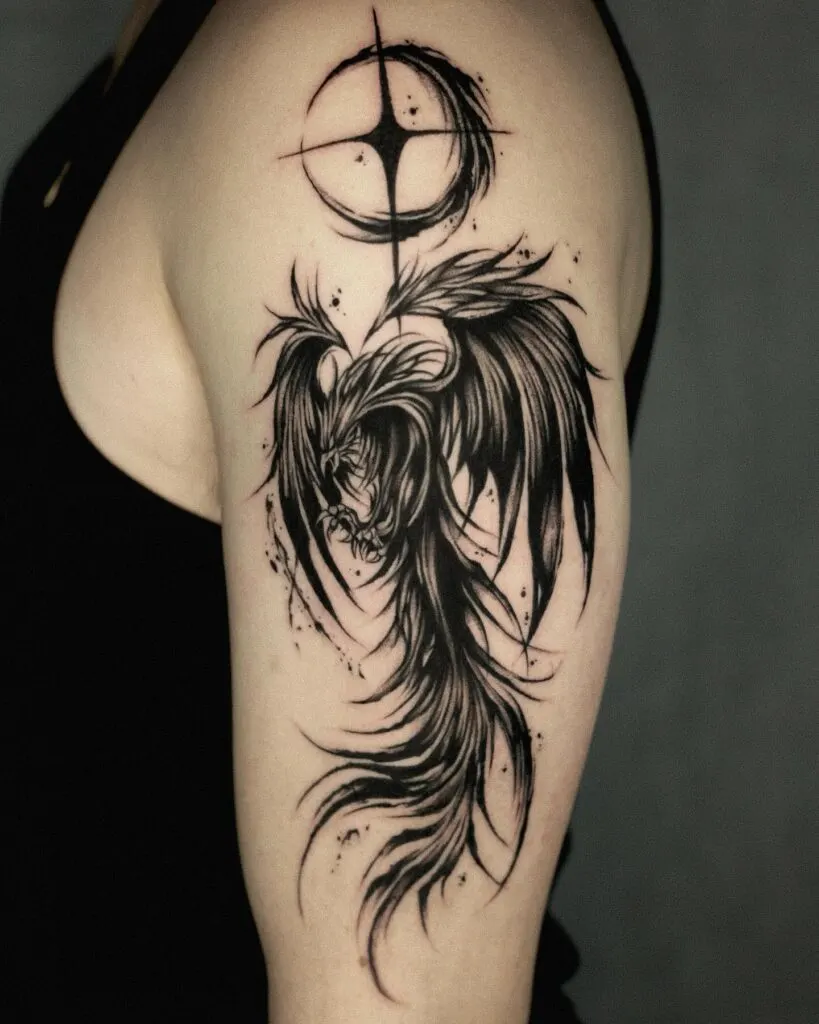
4. Tiger (Tora)
The tiger, or tora, is a symbol of courage, strength, and protection in Japanese culture. It is often associated with the fierce and indomitable spirit of warriors. In traditional Japanese tattoos, the tiger is depicted in dynamic, powerful poses, often surrounded by bamboo or other natural elements. The design is believed to ward off evil spirits, protect the wearer from harm, and bring strength in difficult times. The tiger’s bold stripes and intense gaze make it a striking and commanding tattoo design.
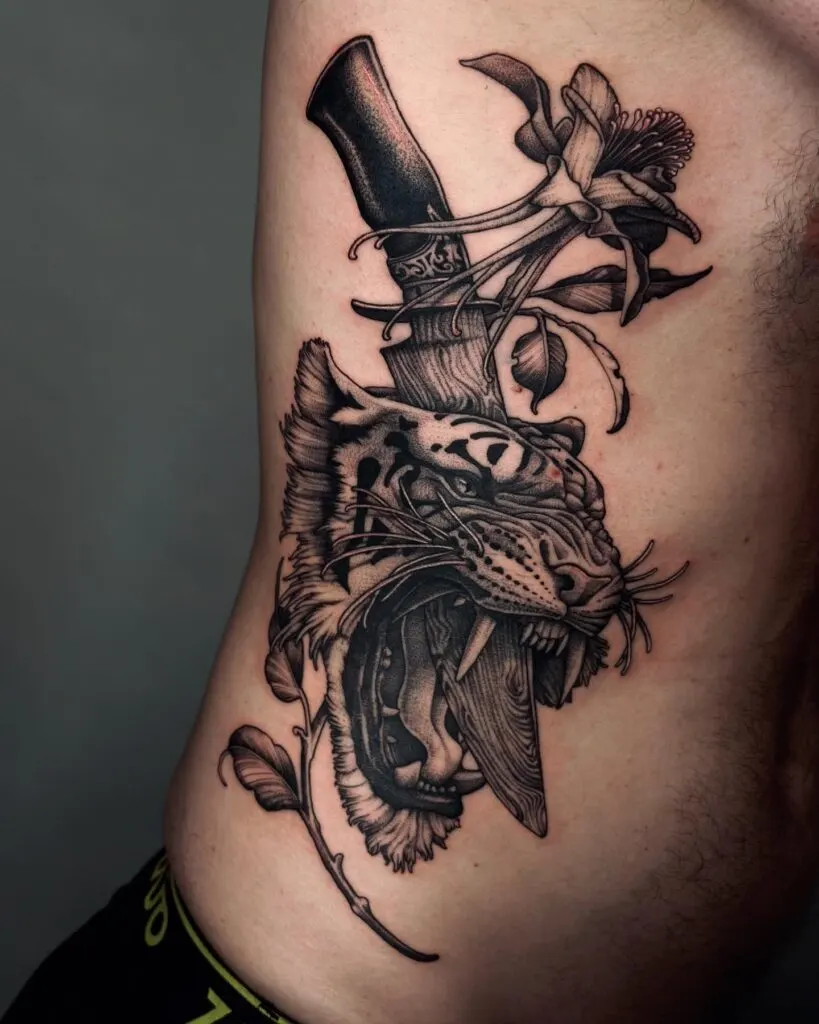
5. Hannya Mask
The Hannya mask is a traditional Japanese theatrical mask used in Noh and Kabuki performances, representing a vengeful female demon. In tattoo art, the Hannya mask symbolizes the complexities of human emotions, particularly jealousy, anger, and passion. It is often depicted with sharp, menacing features and horns, embodying the darker aspects of the human psyche. Despite its fearsome appearance, the Hannya mask also represents protection against evil spirits, making it a powerful talisman for those who wish to confront and overcome their inner demons.

6. Cherry Blossoms (Sakura)
Cherry blossoms, or sakura, are a quintessential symbol of Japan, representing the fleeting nature of life, beauty, and the arrival of spring. In traditional Japanese tattoos, cherry blossoms are often depicted in full bloom, with delicate petals falling gracefully. The sakura tattoo is a reminder of the impermanence of life and the importance of appreciating each moment. It is often paired with other symbols, such as koi fish or samurai, to enhance the theme of transience and the beauty found in life’s fleeting moments.
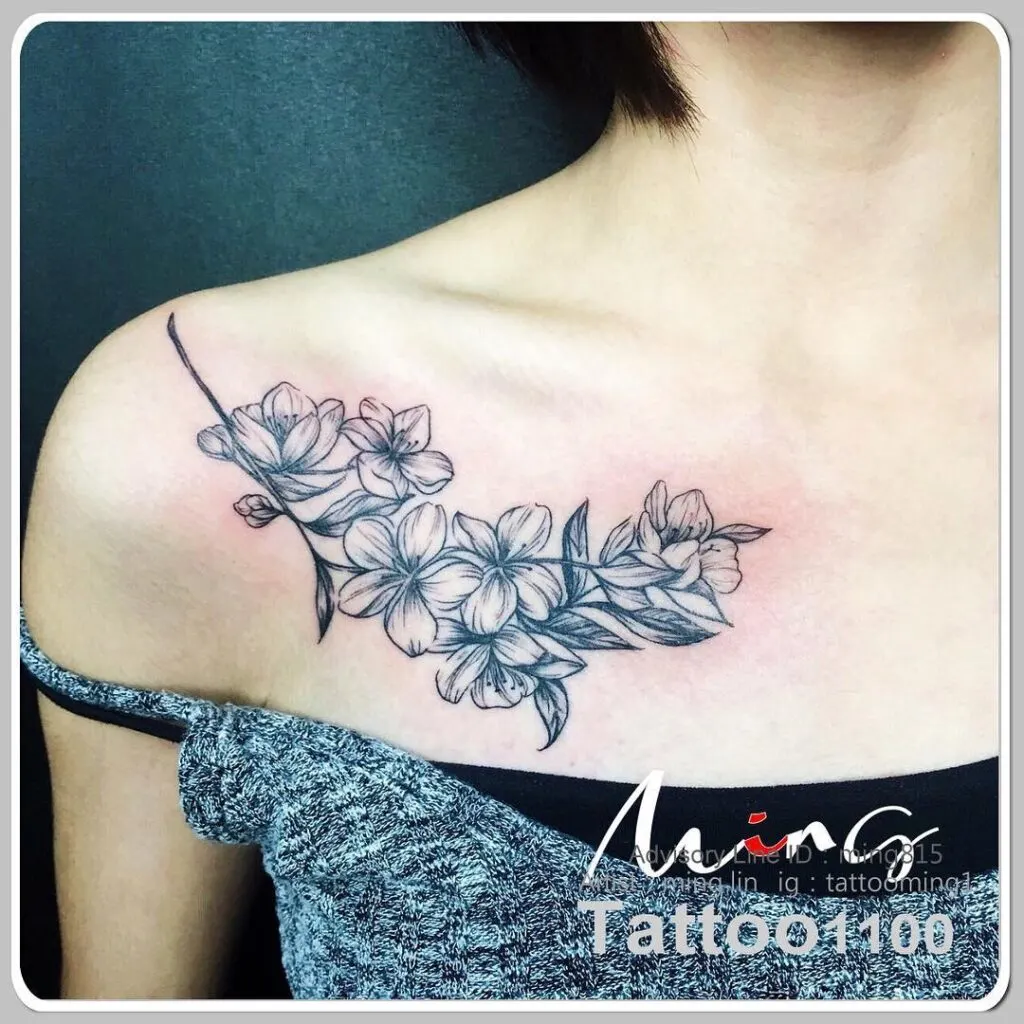
7. Samurai
The samurai is a symbol of honor, discipline, and warrior spirit in Japanese culture. Samurai tattoos often depict a lone warrior, dressed in traditional armor and wielding a katana sword. This design embodies the Bushido code, a set of moral principles that governed the samurai way of life, emphasizing loyalty, courage, and self-discipline. Samurai tattoos are chosen by those who admire these values and seek to embody them in their own lives. The detailed armor and intense expressions of the samurai make this tattoo a powerful and evocative design.
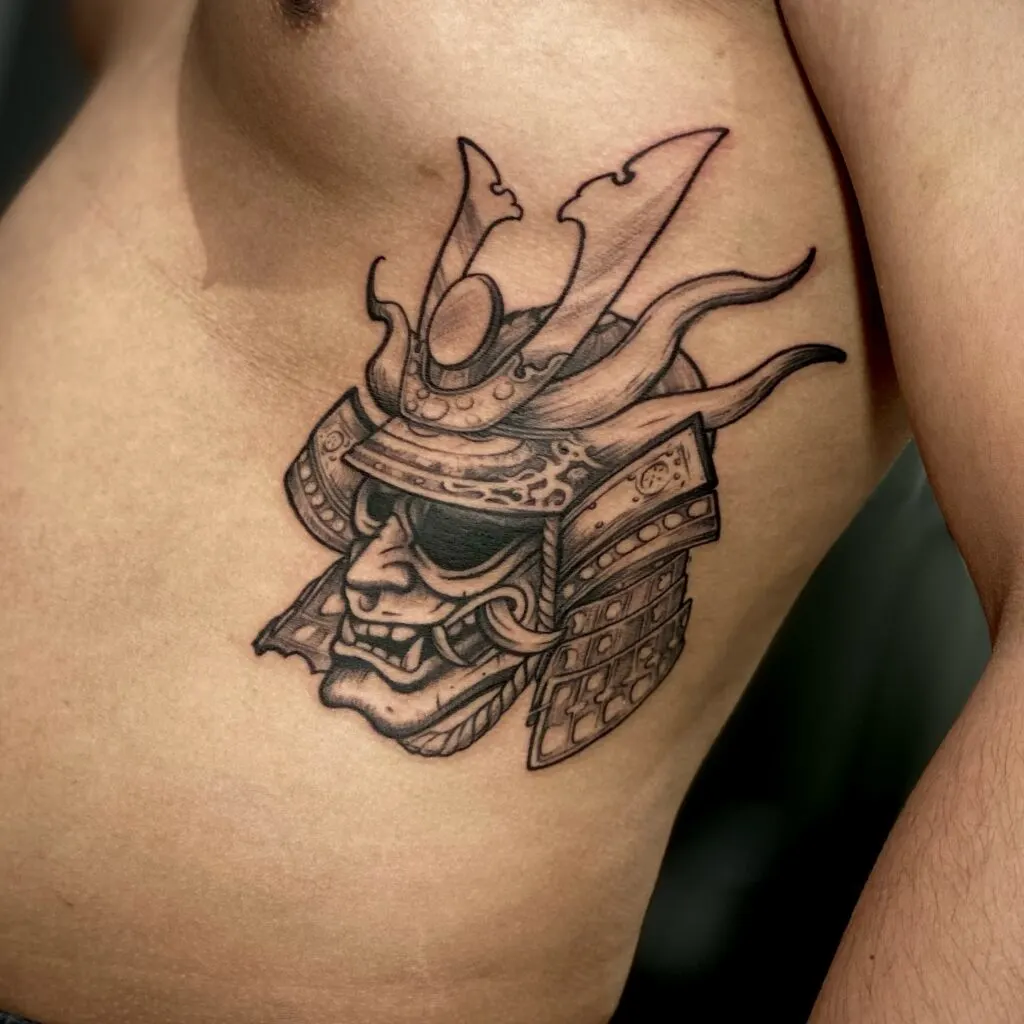
8. Oni (Demon)
Oni are mythical demons in Japanese folklore, often depicted as fearsome creatures with horns, sharp teeth, and a menacing appearance. In traditional Japanese tattoos, oni are used to represent both malevolent forces and the idea of protection, as they are believed to ward off evil spirits. The oni tattoo can symbolize the struggle between good and evil, the duality of human nature, or the wearer’s inner strength in facing life’s challenges. The bold, dramatic features of the oni make it a striking and intense tattoo design.

9. Geisha
The geisha is a symbol of grace, beauty, and cultural refinement in Japanese society. Geisha tattoos often depict a woman dressed in elaborate kimono, with intricate hair ornaments and makeup. This design represents the artistry, elegance, and mystery of the geisha, as well as the cultural traditions they embody. Geisha tattoos are chosen to celebrate the wearer’s appreciation for beauty, art, and the refined aspects of life. The detailed depiction of the kimono patterns and the serene expression of the geisha make this tattoo a timeless and elegant design.

10. Peony (Botan)
The peony, or botan, is a symbol of wealth, honor, and beauty in Japanese culture. It is often referred to as the “king of flowers” due to its lush, full blooms and vibrant colors. In traditional Japanese tattoos, the peony is depicted with large, overlapping petals, often in shades of red, pink, or white. The peony tattoo represents the idea of prosperity and the fleeting nature of beauty, much like the cherry blossom. It is often combined with other symbols, such as dragons or tigers, to create a dynamic and powerful design.

11. Snake (Hebi)
The snake, or hebi, is a complex symbol in Japanese culture, representing wisdom, transformation, and protection. In traditional Japanese tattoos, snakes are often depicted coiled and ready to strike, with detailed scales and a watchful eye. The snake is believed to protect against misfortune and illness, and it is also associated with the idea of renewal and shedding old skins. This tattoo design is chosen by those who seek to embody these qualities or who have undergone significant personal transformation.

12. Lotus (Renge)
The lotus flower, or renge, is a symbol of purity, enlightenment, and spiritual awakening in both Japanese and Buddhist cultures. The lotus grows in muddy water, yet it blooms beautifully, symbolizing the ability to rise above challenges and remain pure and focused on one’s spiritual path. In traditional Japanese tattoos, the lotus is often depicted with large, open petals, often in shades of pink, white, or blue. This design is chosen by those who wish to represent their spiritual journey, resilience, and the pursuit of inner peace.
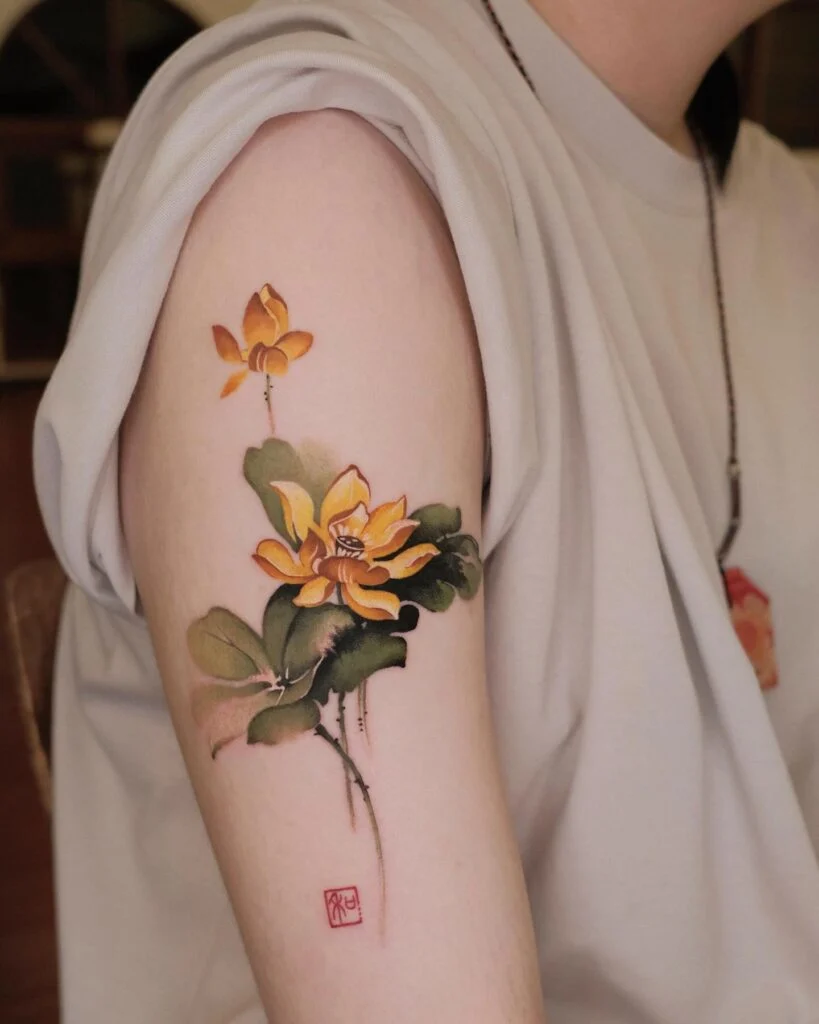
13. Foo Dog (Komainu)
Foo dogs, or komainu, are mythical lion-dog creatures that are often placed as guardians at the entrances of temples and shrines in Japan. They symbolize protection, power, and good fortune. In traditional Japanese tattoos, foo dogs are depicted with fierce expressions, sharp claws, and flowing manes, often in dynamic poses that suggest motion and strength. The foo dog tattoo is believed to offer protection to the wearer, warding off evil spirits and bringing good luck. The detailed and imposing appearance of the foo dog makes it a popular choice for those seeking a powerful and protective design.
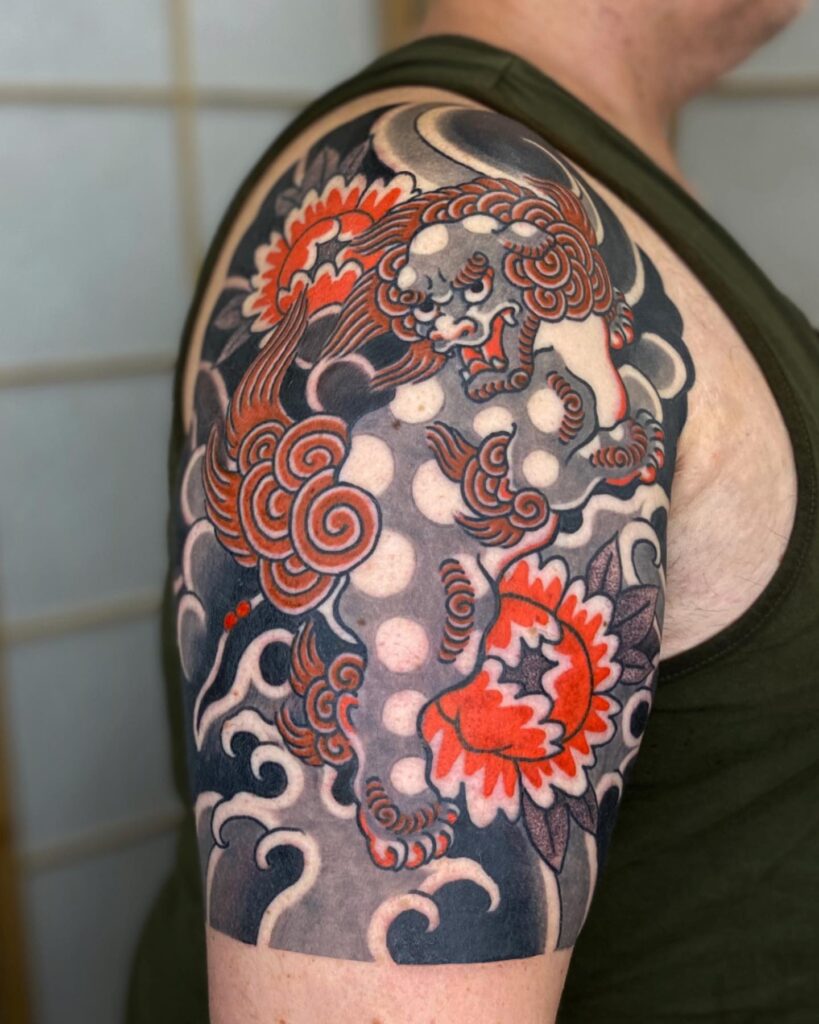
14. Water Waves (Nami)
Water waves, or nami, are a common motif in traditional Japanese tattoos, symbolizing the power and unpredictability of nature. In Japanese culture, the ocean is both a source of life and a force of destruction, making waves a symbol of duality and the ebb and flow of life. Wave tattoos are often depicted with sharp, cresting lines and are frequently combined with other elements, such as koi fish, dragons, or cherry blossoms, to create a harmonious and dynamic design. This tattoo represents the idea of resilience, adaptability, and the ever-changing nature of life.
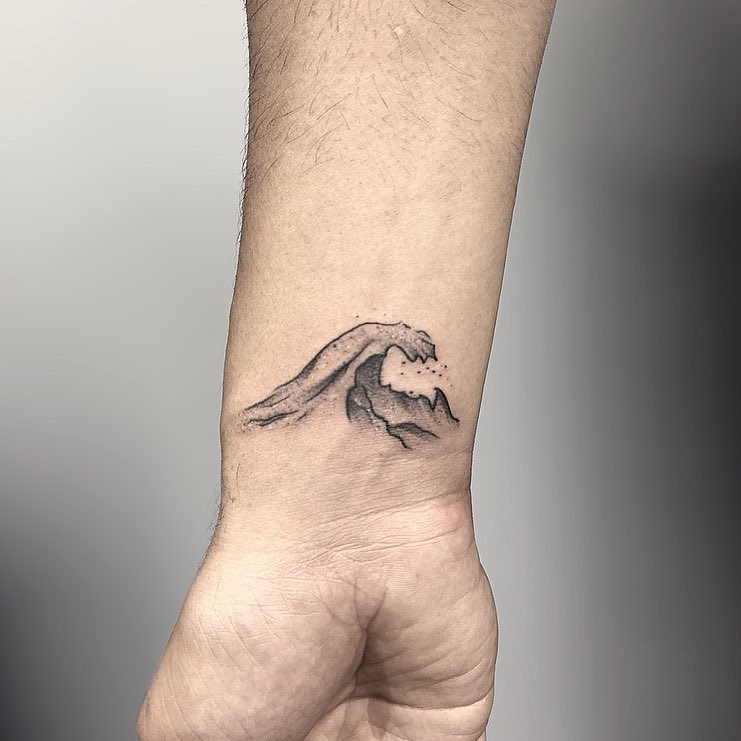
15. Chrysanthemum (Kiku)
The chrysanthemum, or kiku, is a symbol of the Japanese imperial family, representing longevity, rejuvenation, and the sun. In traditional Japanese tattoos, chrysanthemums are often depicted with multiple layers of petals, radiating outward in a circular pattern. The design is detailed and intricate, capturing the elegance and strength of the flower. Chrysanthemum tattoos are chosen to symbolize the wearer’s connection to life’s cycles, their endurance through challenges, and their aspiration for a long and prosperous life. The kiku is often paired with other elements, such as samurai or dragons, to enhance its symbolic meaning.
